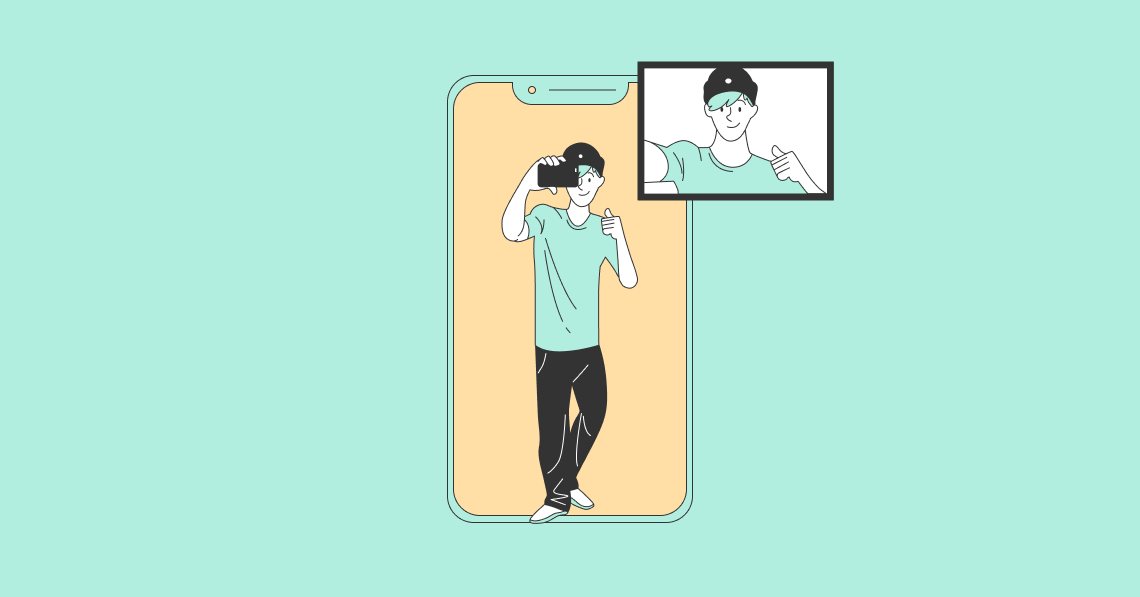Creating content every day is not an easy task. You need to always be at your creative best to come up with new ideas. Even the best content creators may feel burnt out after a while. So, what can you do to fill a hole in your posting schedule?
Many brands have come up with a clever solution: Get your audience to create content for you. With the rise of social media platforms, it has become easier to build your brand’s reputation with user-generated content.
Still new to this trend? In this article, we’ll take a closer look at what user-generated content is and how you can leverage it.
How to Create a User-Generated Content Campaign For Your Brand:
What Is User-Generated Content?
In simple terms, user-generated content (UGC) is any type of content that fans or customers create for a brand. It can be in the form of blog posts, videos, photos, or even tweets. The core idea behind this strategy is to turn customers into brand advocates.
作为一个营销人员,你需要鼓励你的客户s to flaunt the products that they purchase from you. You can curate the best posts and feature them on your social media profiles and website.
Not only is it a great way to build your brand’s credibility, but also to give a shoutout to your followers. Ultimately, it can help you get more engagement and boost your follower count.
If you are still struggling to understand the merits of user-generated content, here are some statistics. According to astudy on UGC:
- 90% of American consumers consider UGC to be the most influential part that affects their purchase decisions.
- 87% of all search engine results consider user-generated content as the second most influential element that affects a purchase decision.
- 73% of shoppers revealed that UGC increases their overall purchasing confidence.
- 61% of shoppers said that UGC gives them encouragement to engage with brands.
It has been a game-changer in the world of marketing. It puts the focus back on the customer and what they have to say about the brand. Basically, it’s a testimonial that can drive trust in your brand.
这是一个很大的转变,从传统的营销技术ques. You’re not going all out with your guns blazing. It’s subtle promotion with more authenticity to it.
Another advantage of UGC is that it can help you build a community of fans. This strategy can make your followers feel like they are a part of a like-minded community.
The best part is that this strategy can also help you get more content for free. So, here is the bottomline on UGC — less money, more authenticity, and better marketing.
How Brands Are Leveraging UGC
Whether you’re a big brand or a startup, UGC is for everyone. It doesn’t require elaborate planning or many resources. To get some inspiration, take a look at how other brands are leveraging UGC to grow their businesses:
1. Buffer
Buffer, a social media management software company, used UGC for a year on their Instagram channel. Since they didn’t have photos directly related to their product, they got creative with their approach. They featured photos taken by their followers from around the world. To give it an element of relatability, they used clever puns and captions.
Even though the content was far from brand-centric, it helped themget more visibility on Instagram. With the help of the hashtag, #BufferCommunity, they even managed to instill a sense of belongingness among their followers.
Within a year of featuring user-generated content, Buffer grew their Instagram audienceby almost 400%. From 4,250 followers, their follower count jumped to over 21,000.
2. Starbucks
Another great way to create buzz about your brand with UGC is through contests. Starbucks’ White Cup Contest is an excellent example of this strategy. They encouraged their fans to take a Starbucks cup and fill it with doodles.
To take part in the competition, users had to take a photo of their cups and submit their designs on social media with #WhiteCupContest.The design on the winning entry was featured on their new limited edition reusable plastic cup.
In a span of three weeks, they received nearly 4,000 entries from their customers. Not only did this UGC campaign give them publicity, but it also helped them with product design
3. Aerie
To get the most out of their marketing campaigns, Aerie oftencollaborates with influencersfor UGC content. They are committed to the body positivity movement and want women to be comfortable in their skin. So, they don’t airbrush the photos they used in their campaigns.
To promote this cause, they collaborated with several micro and nano-influencers who posted unedited photos of themselves. Furthermore, they encouraged users to post their untouched photos wearing Aerie’s swimsuits.
Not only did their social campaign win a lot of accolades, they also got great participation. They received images of women in all sizes flaunting their swimsuits.
Aerie’s UGC campaign had all the right ingredients needed to create a successful marketing strategy: a social cause, influencers, and UGC.
4. Airbnb
Airbnb uses the power of UGC for storytelling. They encourage their customers to post photos of their vacation homes and experiences on social media.
They feature these posts on their Instagram handle to give their followers a better idea of what they can expect during the stay. What’s more, they add details of the place or the host in their captions to create a compelling narrative.
It’s based on a basic rule in marketing — Show, don’t tell. Instead of just listing the features of every vacation home, they have made an effort to give their users an overview of the whole experience. From this example, it’s evident that UGC can also play a central role in shaping a brand’s narrative.
5. Wayfair
Furniture and home goods online retailer, Wayfair, uses UGC to give their customers home design ideas. On their Instagram page, they feature how their customers are using their products to perk up their homes.
These posts can add social proof and even inspire their audience to transform their living spaces. For this campaign, they’ve created the branded hashtag, #WayfairAtHome.
6. Spotify
Spotify came up with an unconventional idea for their UGC campaign. They didn’t exactly ask their users directly to create content, but they looked up what they had created.
Using anonymous data, they featured some of the strangest playlists that users had created on their app. From funny to outrageous, they showcased it all.
To take the campaign to the next level, they featured these playlists on billboards and memes. In some of the videos, they showcased artists commenting on playlists that included their songs. The whole campaign was a light-hearted take on how users use the app.

Image viaThe New York Times
But the campaign had more to it than giving users just a good laugh. It highlighted how the app allowed users to personalise their listening experiences. Unlike most UGC campaigns, this one wasn’t restricted to one medium. They explored multiple mediums to engage their audience.
Things to Keep In Mind While Creating a User-Generated Campaign For Your Brand
You’ve seen what other brands are doing with UGC. Now it’s your turn to get the ball rolling. Before you set out to plan your UGC, keep these things in mind:
1. Pick the Right Social Media Channel
The first step for you should be to decide on the right social media channel for your campaign. Of course, Instagram is the most popular platform because it’s highly visual. However, before you decide, consider where your target audience spends most of their time.
While photos, videos, GIFs, and Stories work great for Facebook and Instagram, your content options on other platforms will be limited. LinkedIn is mostly about text posts and infographics. On the other hand, YouTube is only about videos.
2. Define Your Goals
User-generated content can help you build your audience and boost your engagement. At the same time, it can improve your brand trust and help you spread brand awareness. Clearly, there are multiple ways it can help you.
Before you create your campaign, you need to be clear about what your aim is. Based on what your ultimate goal is, you can plan your UGC marketing campaign.
3. Give Clear Instructions to Your Audience
Tell your audience exactly what you want from them. Whether it is a video or a photo, be clear about the guidelines of your campaign.
Mention details like submission deadlines, hashtags to be used, and any other rules you may have. If you specify your requirements clearly, your audience is more likely to send you content that you can use.
Conclusion
UGC can give you a big edge over your competitors. It’s a strategy that can help you create a powerful presence on social media. The best part is that you can get creative and explore different ways of engaging with your audience. Take inspiration from the examples in this article and get started!




